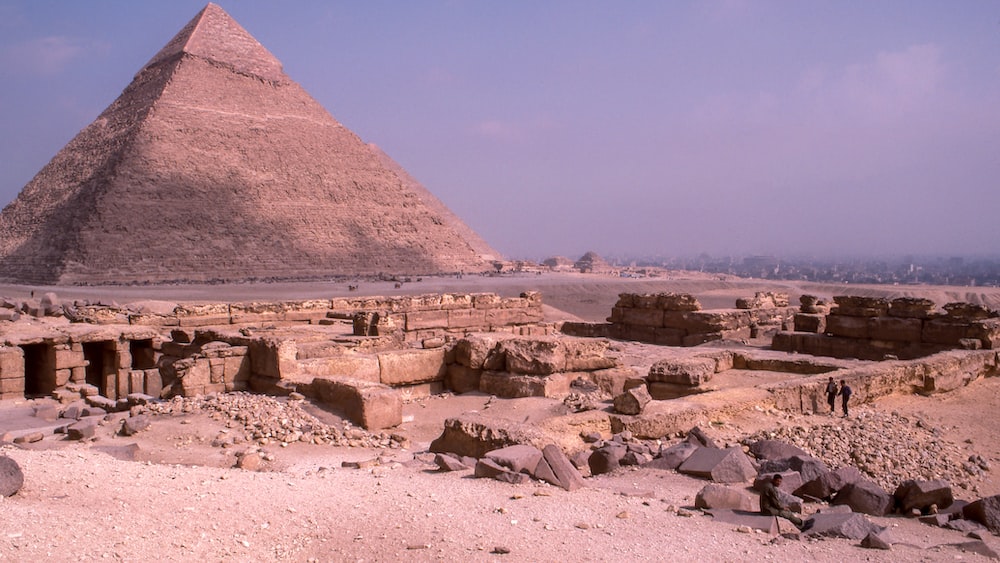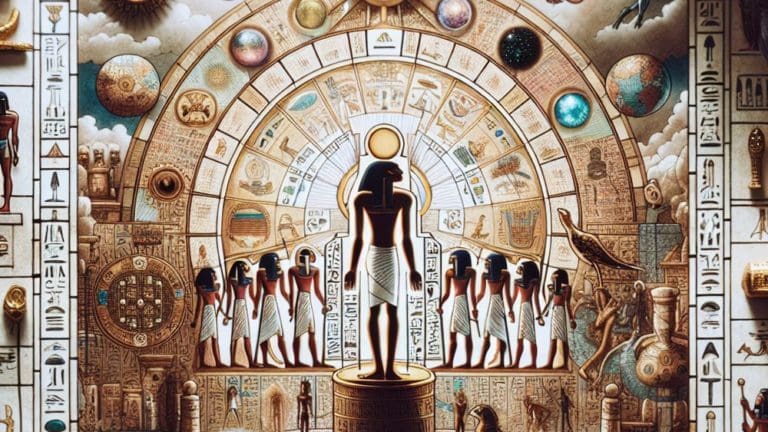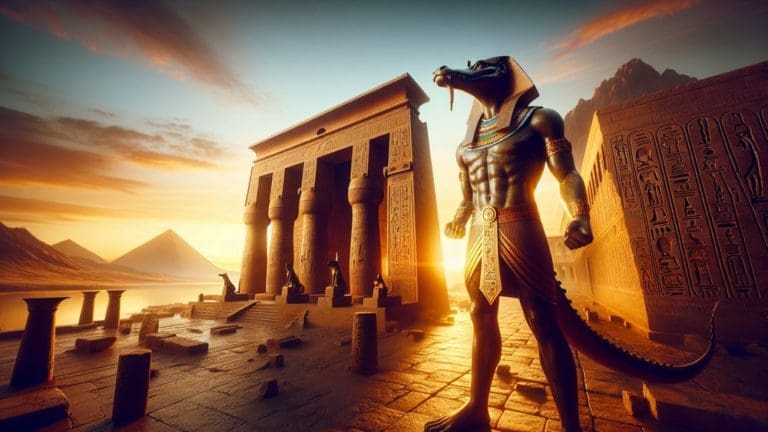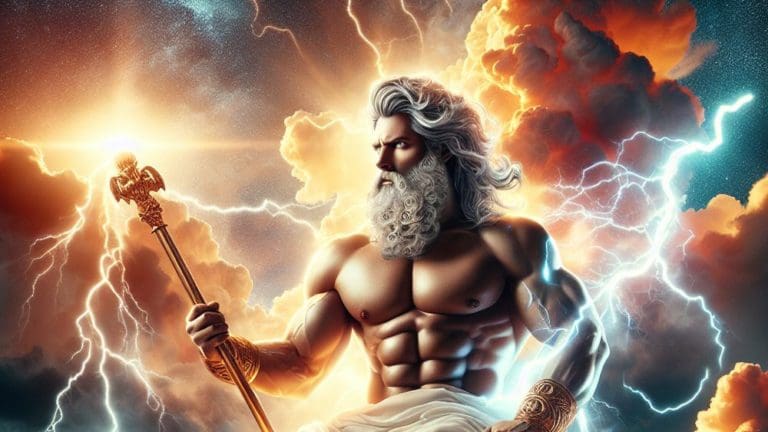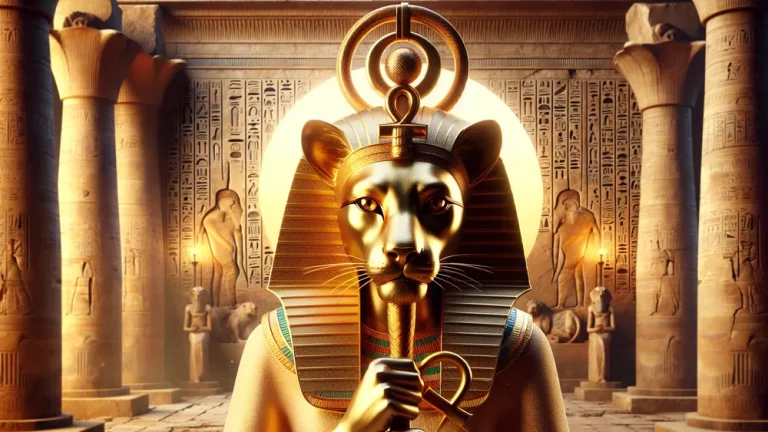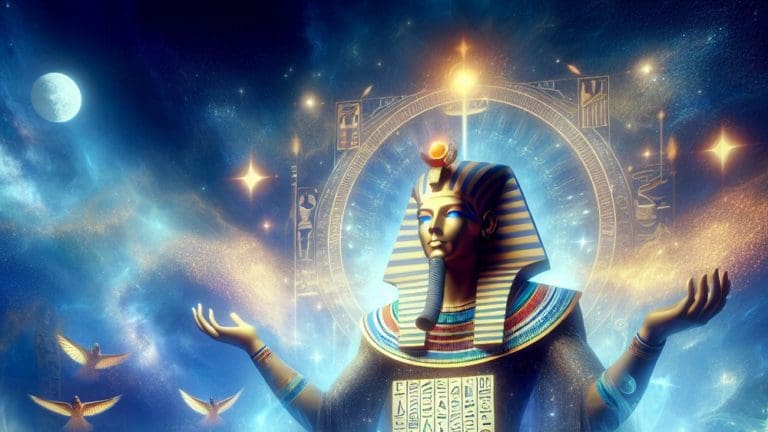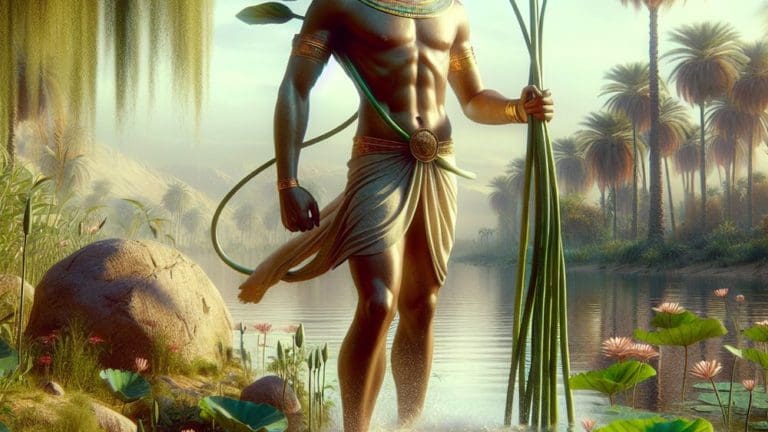Ptah’s Wife Revealed: Unveiling The Secrets Of The Egyptian Deity
Ptah’s Wife Revealed: Unveiling The Secrets Of The Egyptian Deity
Welcome, fellow explorers of the past! Have you ever let your curiosity lead you down the winding paths of ancient history, trailing the mysteries of the past like crumbs in the woods? Well, today we’re swapping Indiana Jones’s hat for a pharaoh’s crown and delving into the heart of ancient Egypt. Get ready to unveil the secrets of an enigmatic deity, Ptah, and his consort, Sekhmet. Won’t you join me on this exciting journey as we delve deep into the world of gods, symbols, and ancient societies? Ready to explore the unknown, crack codes, and uncover the relationships of the gods in ancient Egyptian mythology? Who was Ptah, and what was the tale of his consort Sekhmet? Let’s solve the puzzle of Ptah’s wife together!
Ptah: The Egyptian God
The allure of ancient Egypt lies not just in its towering pyramids and golden pharaohs but within the narratives of its gods and goddesses. As we open the golden lid of the sarcophagus, we find Ptah, often overshadowed by the more famous deities like Osiris or Isis, yet his stories carry the essence of ancient Egypt, akin to the scent of lotuses drifting along the Nile.
Understanding Ptah’s Role in Egyptian Mythology
Once upon a time, in the vast, mystical land of Egypt, Ptah, known to some as the ‘God of Craftsmen,’ held a position of paramount importance. The ancient Egyptians believed Ptah to be the deity responsible for the creation of the world. The perception of Ptah as the divine artisan gave birth to stories of him sculpting everything in existence on his potter’s wheel.
The complexity of Egyptian mythology, woven into the fabric of their society, painted Ptah as a powerful god, yet intimately tied to the daily lives of the Egyptians. Unlike the fiery Seth or the regal King Osiris, Ptah symbolized the hardworking, creative spirit that was both divine and utterly human.
Ptah, the ‘God of Craftsmen,’ held a position of paramount importance and symbolized the hardworking, creative spirit that was both divine and utterly human in ancient Egyptian mythology.
Ptah’s Unique Attributes and Symbols
Each Egyptian deity carries a set of attributes and symbols expressing unique power and essence. Envision Ptah, crafted with green skin to represent the fertility of the Nile – the lifeblood of Egypt flowed in his veins.
Wrapped in a tightly fitted cloak, befitting an artisan, Ptah stands holding a staff combining the symbols of life (Ankh), stability (Djed), and dominion (Was). This amalgamation was no accident; it mirrored Ptah’s intricate role in the worldview of the Egyptians, stitching together the concepts of life, stability, and power in a compelling divine tapestry.
Ptah’s Consort: Sekhmet
As we journey deeper into Ptah’s tale, we meet a fascinating character, his wife, a deity with the power to both destroy and heal. Here we welcome Sekhmet – Ptah’s wife, the lioness-headed goddess known for her wrath and, paradoxically, her healing prowess.
Sekhmet: The Lion-Headed Goddess
Visions of Sekhmet conjure images of a fierce goddess with the head of a lioness, a mesmerizing blend of raw power and divine grace. Ancient texts often depict Sekhmet as the “one before whom evil trembles,” testament to her role as a violent deity capable of wreaking havoc.
However, paradox lies at the heart of Sekhmet, just as the desert heat gives way to the cool night, Sekhmet’s wrathful nature is balanced by her role as a healer. Health amulets bearing her likeness were common, believed to offer protection and healing. Such was the duality of Sekhmet, a paradox that made her a compelling figure in the pantheon of Egyptian deities.
The Relationship Between Ptah and Sekhmet
The relationship between Ptah and Sekhmet was more than simply matrimonial; they represented a union of complementary attributes. Ptah, the creator, found his perfect counterpart in Sekhmet, the destroyer and healer. Together, they embodied the cycle of creation and destruction, a theme that resonates throughout ancient Egyptian mythology.
The bond between Ptah and Sekhmet was not just central to their individual stories, but also to the broader narrative of ancient Egypt. Their relationship illustrated the balance and harmony that was so integral to ancient Egyptian beliefs.
Ptah’s Family and Relations
As we continue to tread the sands of time, the intriguing tapestry of Ptah’s family and relations unfolds. In the labyrinth of gods and goddesses, intrigue, and alliances, who were Ptah’s offspring? And the deities he was syncretized with? Follow me as we journey deeper into the mysteries of Ptah’s sacred family tree.
Ptah’s Offspring: Nefertem and Imhotep
Diving deeper into the tapestry of Egyptian mythology, we find that Ptah, the revered creator god, fathered two significant beings: Nefertem and Imhotep. Imagining the half-forgotten whispers of ancient Egyptian storytellers, we learn that Nefertem, born of Ptah and his wife Sekhmet, was often depicted as a beautiful young man with a lotus flower crown, symbolizing the first sunlight and the delightful scent of the Egyptian blue water lily at dawn.
Nefertem’s very essence is tied into the cycle of rebirth with the rising sun each day. Ptah’s love for his wife, Sekhmet, brought forth this life-embodying deity, who held a significant role in the daily rebirth of the world. Such is the power of Ptah, the “beautiful god”, and his wife Sekhmet, the mighty lioness!
Yet another offspring of Ptah is Imhotep, who stands out as a remarkable figure in Egyptian history. Unlike most gods, Imhotep was originally a mortal, a real historical character, widely acknowledged as a wise adviser to King Djoser and designer of the step pyramid at Saqqara. His significant contributions to Egyptian society led to his deification after death, a rare honor indeed. He’s remembered not just as the son of Ptah, but also as a god of wisdom and medicine. His story shows how the exceptionally knowledgeable and talented could ascend to godhood, merging the realms of the divine and human.
Syncretism of Ptah and Other Deities
Ptah’s influence was not only limited to his offspring and direct relations. His essence was often merged or synchronized with other deities, in a practice known as syncretism. One of these was the fusion of Ptah with the funerary god Sokar, creating Ptah-Sokar. This composite form, often depicted as a mummified hawk or human with a falcon’s head, became popular in the Late Period and represented the god of the Memphite necropolis.
Ptah also formed part of a powerful divine trio, “the Memphite Triad”, along with his wife Sekhmet and their son Nefertem. This blending is an intriguing aspect of ancient Egyptian pantheon, emphasizing the flexibility of their beliefs and demonstrating how seamlessly gods could merge, sharing attributes and enhancing each other’s roles.
Ptah’s influence extended beyond his immediate family, as he often merged with other deities through syncretism, such as the fusion with Sokar to create Ptah-Sokar, and formed part of the powerful divine trio known as the Memphite Triad, showcasing the flexibility and merging of gods in ancient Egyptian beliefs.
Ptah and Sekhmet in Ancient Egyptian Art
Ptah and his wife Sekhmet are often found etched in the contours of ancient Egyptian art, adding layers to their captivating lore. Their depictions provide a sublime illustration of how spirituality, mythology, and art were intricately woven together in the fabric of ancient Egyptian culture.
Depictions of Ptah and Sekhmet in Statues and Reliefs
In the seemingly silent world of stone and stucco, Ptah and Sekhmet come alive through intricate statues, reliefs, and carving. Ptah, identifiable by his streamlined, mummy-like form, often is shown holding a scepter combining the ankh, was, and djed symbols – embodying life, power, and stability respectively.
Beside him, Sekhmet’s statues frequently present this lioness goddess in her most common guise – a woman with a lioness’s head. Roaring softly from the depths of the past, she often bears the sun disk and cobra (a dual symbol of the sun god Ra, her father) on her head. These stunning pieces of ancient art, whether nestled in the sandy embrace of the past or displayed in the cool and quiet halls of modern museums, silently tell the tale of the divine romance between Ptah and his powerful wife Sekhmet, enticing us to delve deeper into the golden age of Egyptian deities.
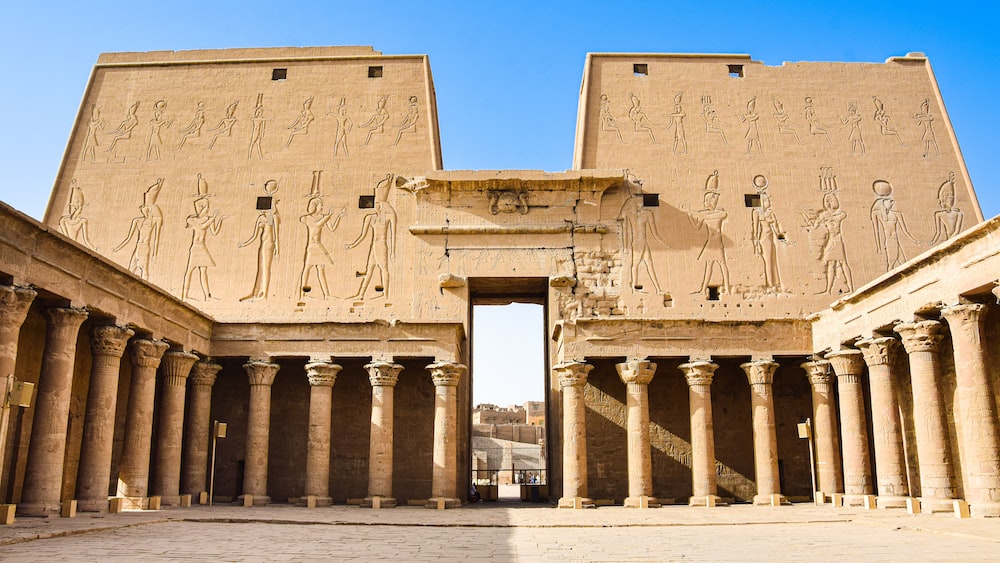
The Symbolism of Ptah and Sekhmet in Ancient Egyptian Culture
The symbolism of Ptah and Sekhmet was woven deeply into the fabric of ancient Egyptian culture. As the god of craftsmen and architects, Ptah encapsulates the quintessential ideals of creativity, construction and meta-physical awakening. His very name means “opener of the mouth” – an allusion to the ceremonial ritual of making statues speak! This demonstrates Ptah’s inextricable link to creation, transformation, and indeed, the very essence of life.
In contrast, Sekhmet signifies power, war, and healing. Her very form – that of a lioness – speaks of her raw and untamed strength. This potent symbol of fierce protection also highlights her role as the protector of the Pharaohs. It is said that the death of a Pharaoh would rouse Sekhmet’s wrath, creating a terrifying link between the divine and the mortal realms.
Interestingly, the story of Sekhmet’s pacification and conversion into Hathor, the loving cow-goddess, by consuming red beer (believing it to be blood), provides fascinating insights into how well the nature of duality was understood by the ancient Egyptians. It symbolizes the transformation from chaos to peace, from destructive anger to harmonious happiness!
The Influence of Ptah and Sekhmet in Modern Culture
The significance of Ptah and his wife Sekhmet extends beyond the realm of ancient times, seeping into modern culture and influencing our perception of the divinely unknown. They remain ever-present, their essence echoing in literature, media, and the ongoing exploration of Egyptology.
Ptah and Sekhmet in Literature and Media
For such ancient gods, Ptah and Sekhmet are surprisingly up to speed, making their impressions felt in contemporary literature and media. Featured in novels such as Rick Riordan’s The Kane Chronicles and Anne Rice’s The Vampire Chronicles, they’ve found a new realm of existance – that of the written word!
On the exciting canvas of modern graphic novels and comic books, they appear as powerful characters, showcasing their attributes in a fresh, captivating narrative style. Their stories, full of mystery and majesty gleaned from ancient papyrus tales, are told anew, enchanting new generations of fans in the 21st century. So take a look around – it wouldn’t be surprising to find Ptah or his wife lurking in a museum exhibit, gracing the silver screen, or staring out from the pages of your favorite book!
Remember to treat the stories of Ptah and his wife with respect, as they offer a tantalizing glimpse into the rich tapestry of ancient Egyptian culture. Whether you’re a dedicated Egyptologist or a casual fan of mythology, it’s evident there’s so much more to discover. Let’s ponder their mysteries, acknowledge their influence, and marvel at their enduring appeal, all while taking another step on the mesmerizing path of understanding our human past.
The Legacy of Ptah and Sekhmet in Contemporary Egyptology
Today’s Egyptologists have immense respect for the depth and nuances of ancient Egyptian mythology. They hold Ptah and his wife Sekhmet in high regard, acknowledging their influence on the civilization’s culture and artwork. Despite centuries of change, one fact remains unchanged; these deities’ mark on historical records makes them an enduring mystery for archaeologists to unravel. Whether on a painting, carving, or papyrus scroll, our knowledge about Ptah and Sekhmet has been greatly shaped by ancient depictions and accounts.
Recent excavations have unearthed fresh clues about Sekhmet’s role alongside Ptah. In reliefs and paintings, Sekhmet is heralded as a key character in several myths, reflecting the central order of godly hierarchy. Current research underscores that her representation, equally fierce and protective, portrays the balance of power among the ancient Egyptian pantheon. Also, the clues about Ptah’s relationship with his wife offer a peek into the ancient society’s perspective on marital bonds.
The continued study of Ptah’s wife in contemporary Egyptology showcases the academic world’s fascination with the power of these divine entities and their impact on human history. Museums worldwide house their statues, reliefs, and homage artifacts, preserving their legacy in humanity’s cultural pantheon. Their stories are shared with millions, from curious tourists to earnest researchers, reaffirming the timelessness of their tales.
The enduring mystery of Ptah and Sekhmet’s mark on historical records makes them an influential and fascinating subject of study for Egyptologists, with recent excavations providing fresh clues about their roles and relationship.
FAQs
1. Who was Ptah in Egyptian mythology?
In Egyptian mythology, Ptah was a creative deity, revered as the god of craftsmen and architects. Often depicted as a mummified man, Ptah was associated with creation and regeneration, embodying the divine force that brought the universe to life.
2. What is the significance of Sekhmet, Ptah’s wife?
Significance of Sekhmet, the wife of Ptah, lies in her duality. Sekhmet was feared as the goddess of war, often personified as a lioness representing strength and ferocity. Simultaneously, she was also celebrated as the goddess of healing, showcasing her significant, multifaceted role in the Egyptian pantheon.
3. How are Ptah and Sekhmet depicted in ancient Egyptian art?
Depictions of Ptah and Sekhmet in ancient Egyptian art are riveting and metaphorical. Ptah is usually portrayed in close fitting garments, bearing a distinctive staff symbolizing stability and eternity. Sekhmet, on the other hand, is frequently shown as a captivating lioness-headed woman, signifying her ferocity and protective nature.
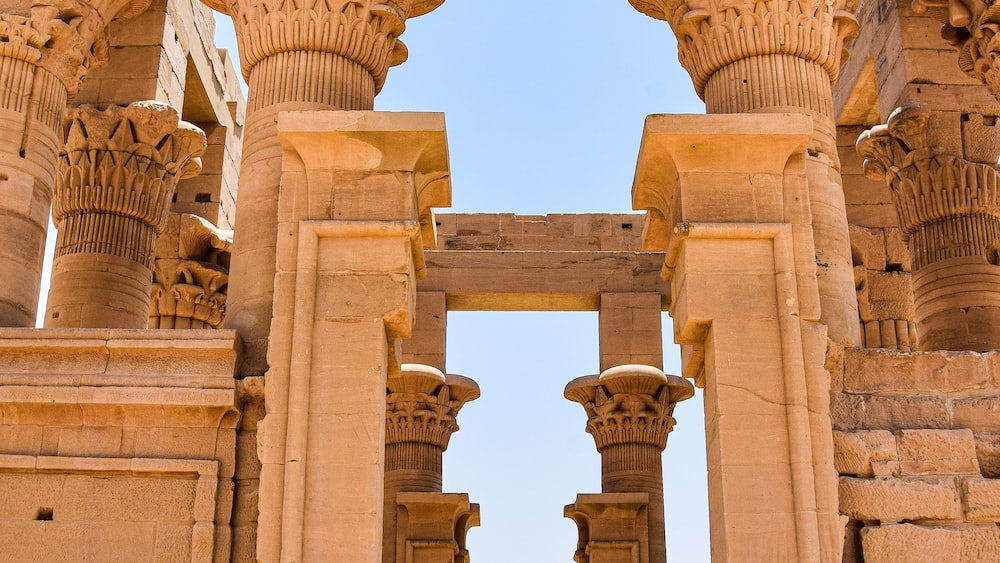
4. What is the modern cultural impact of Ptah and Sekhmet?
Modern cultural impact of Ptah and Sekhmet is tangible across various domains. Their stories inspire creative works, from literature to cinema, showcasing humans’ long-standing fascination with these ancient deities. Their myths have even influenced modern beliefs and rituals, paying homage to their timeless, universal themes.
Conclusion
In the grand tapestry of ancient Egypt, Ptah’s wife Sekhmet remains a figure of boundless fascination. Her story, entwined with Ptah’s, serves as a potent reminder of humanity’s perennial quest to understand the mysteries of existence. Our investigation into their stories, their forms in various paintings, such as the famed “King Tut perfuming his wife” makes us appreciate the vibrant patchwork of their mythology.
Unearthing the secrets of Ptah and Sekhmet not only feeds our curiosity; it reminds us of our shared past. It beckons us to delve deeper into humanity’s extraordinary journey, to feel the subtle pulse that unites our species beyond borders and timelines. After all, isn’t genius about seeing connections where others see difference?
So, my fellow explorers, never hesitate to heed the call of curiosity, especially when it leads you back to places once forgotten. History isn’t static; it thrives with many layers, eager for passionate souls ready to peal back time’s curtains. With each layer we reveal, we encounter echoes of the past, ready to converse with us. And so, I hope to meet you again, on another voyage into the realm of the unsolved.
Keep on exploring, Cedric.

